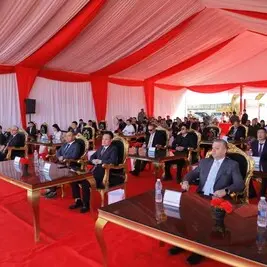Dubai: The Red Hat Enterprise Open Source Survey[1] revealed that more than 55% of enterprises surveyed are expecting to increase their use of containerized applications in 2020. While cloud-native applications represent the future of business innovation, many critical production applications remain based in traditional virtual machines (VMs). Today, we’re working to unify these traditional workloads with the cloud-native future through OpenShift virtualization, a new feature of Red Hat OpenShift built from the KubeVirt community project.
OpenShift virtualization enables IT organizations to bring standard VM-based workloads to Kubernetes, helping eliminate the workflow and development silos that typically exist between traditional and cloud-native application stacks. This makes it easier to migrate and modernize existing applications and services on the industry’s most comprehensive enterprise Kubernetes platform.
Joe Fernandes, vice president, Products, Cloud Platforms Business Unit, Red Hat, said: “Modernizing traditional applications to take advantage of cloud-native advances, like Linux containers, microservices and Kubernetes, is a frequent component of digital transformation. But these efforts can take time, especially if developer and operations teams are building for and maintaining two distinct technology silos. OpenShift virtualization enables organizations to more effectively implement DevOps practices, helping to enhance productivity and lower costs while continuing application innovation.”
OpenShift virtualization brings a host of enhancements to developers, including:
- A consistent development experience across VMs, containers and serverless functions as business-critical applications grow to encompass a blend of these technologies. All components of the enterprise application stack, both traditional and new, can be managed directly through Red Hat OpenShift.
- The ability to modernize VMs or not depending on necessity. VMs can be migrated to OpenShift without the need to fully containerize, enabling them to power mixed applications and be containerized over time (or not).
- Full support for Windows VMs running older versions of Windows back to 2008 with the capability to refactor them over time to use Windows containers and Windows Server 2019 or be maintained purely as VMs.
IT operations teams can also see benefits from OpenShift virtualization, including:
- Modern, consistent and simplified management by uniting teams on a single, fully-open, production-ready platform that can cover the entirety of an organization’s application estate.
- Support for stateful applications that require storage and traditional on-premises resources, making it easier to repurpose funds and resources to further innovation.
- A sensible on-ramp to next-generation IT skills and operational models with a single, unified platform that builds Kubernetes, serverless and service mesh skills.
Fully-open Kubernetes, innovation ready for the enterprise
Red Hat OpenShift and all of the platform’s features, including OpenShift virtualization, are based entirely on leading open source projects, including the Kubernetes project, KubeVirt, Istio, Metal3 and more. Red Hat has continued to serve in the vanguard of cloud-native communities across the Kubernetes ecosystem, as the second leading corporate contributor to the Kubernetes project itself (behind only project founder Google) and as a driver for key features like role-based access control (RBAC), Custom Resource Definitions (CRDs), Operators, StatefulSets, and etcd.
Red Hat OpenShift virtualization is now available as a Technology Preview, with general availability planned for later in 2020. For more information, our experts have drafted some more technical overviews and deep dives on the OpenShift blog:
- OpenShift virtualization: What’s new with virtualization from Red Hat
- OpenShift virtualization: Containers, KVM, and your VMs
-Ends-
[1] 2020 Red Hat Enterprise Open Source Survey
© Press Release 2020
Disclaimer: The contents of this press release was provided from an external third party provider. This website is not responsible for, and does not control, such external content. This content is provided on an “as is” and “as available” basis and has not been edited in any way. Neither this website nor our affiliates guarantee the accuracy of or endorse the views or opinions expressed in this press release.
The press release is provided for informational purposes only. The content does not provide tax, legal or investment advice or opinion regarding the suitability, value or profitability of any particular security, portfolio or investment strategy. Neither this website nor our affiliates shall be liable for any errors or inaccuracies in the content, or for any actions taken by you in reliance thereon. You expressly agree that your use of the information within this article is at your sole risk.
To the fullest extent permitted by applicable law, this website, its parent company, its subsidiaries, its affiliates and the respective shareholders, directors, officers, employees, agents, advertisers, content providers and licensors will not be liable (jointly or severally) to you for any direct, indirect, consequential, special, incidental, punitive or exemplary damages, including without limitation, lost profits, lost savings and lost revenues, whether in negligence, tort, contract or any other theory of liability, even if the parties have been advised of the possibility or could have foreseen any such damages.


















